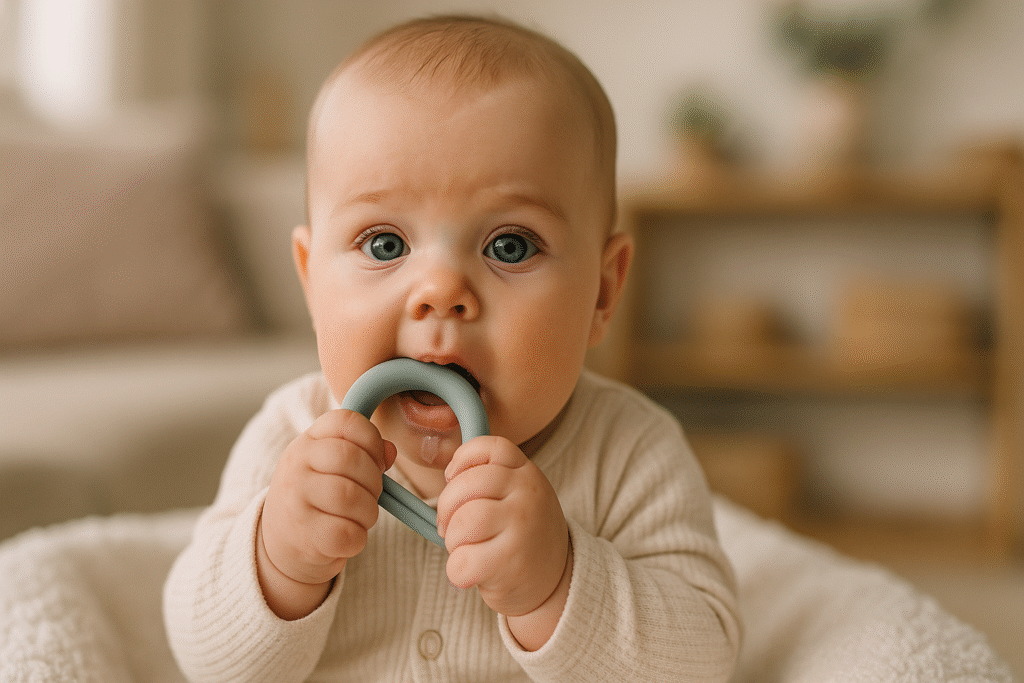
Teething is one of the big milestones in your baby’s first year. And it can bring changes you will notice both day and night. Around this time, your baby may start drooling more, chewing on anything they can reach, or becoming a little more unsettled than usual. While teething is a completely normal stage of development, it can be an uncomfortable experience for your baby and a challenging one for you.
Most babies begin teething between 4 and 7 months, though some start earlier and others later. The first teeth to appear are usually the two bottom teeth (lower central incisors), followed by the top front teeth a month or two later.
Not every baby will have the same experience, but some common signs include:
Teething can sometimes cause a mild rise in temperature, but high fever, diarrhoea, or severe illness are not caused by teething. If your baby has these symptoms, it is important to check in with your paediatrician – it may be a sign of something else.
Seek medical advice if your baby:
While you cannot stop teething, you can help soothe your baby’s discomfort:
Offer something safe to chew, like a silicone or wooden teether.
For example, the Hochet de Dentition Étoile – Vert is a lightweight, easy-to-grip silicone teether that invites playful exploration. Each of its 5 arms has a different textured surface to offer plenty of variety and help your baby relax and sooth its gums, especially during teething.
Fruity designs like Jouet de Dentition – Wally the Watermelon combine soft textures with bright, playful shapes that catch your baby’s attention. Made from 100% natural rubber and hand-painted with safe pigments, these toys are great for gum relief as well as sensory delight, providing gentle distraction and engaging sight and touch in a fun way.
Teething is a temporary phase, but it can feel intense while you’re in it. Knowing the signs, keeping your baby comfortable, and having a few helpful tools on hand will make the journey smoother for both of you.